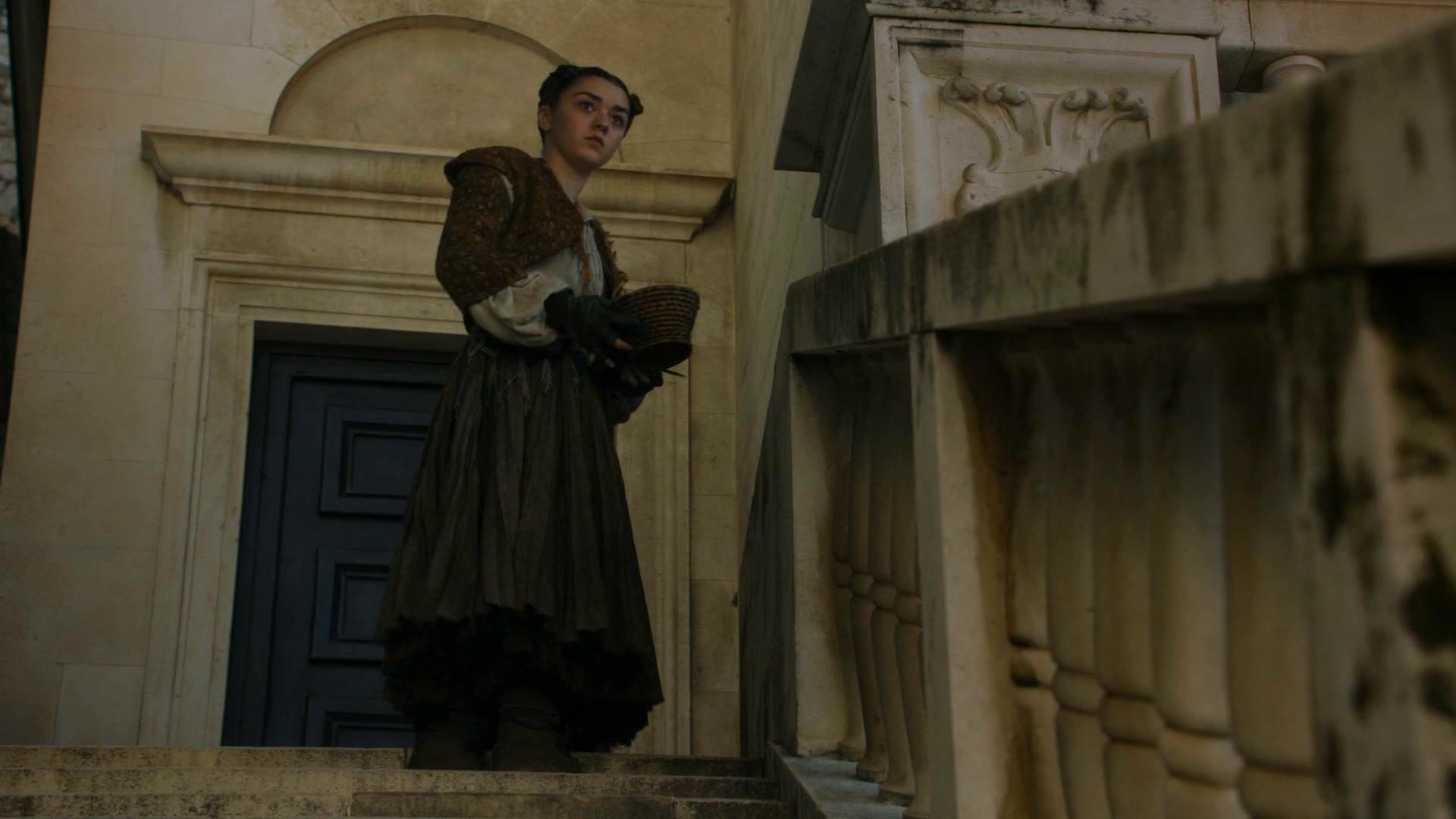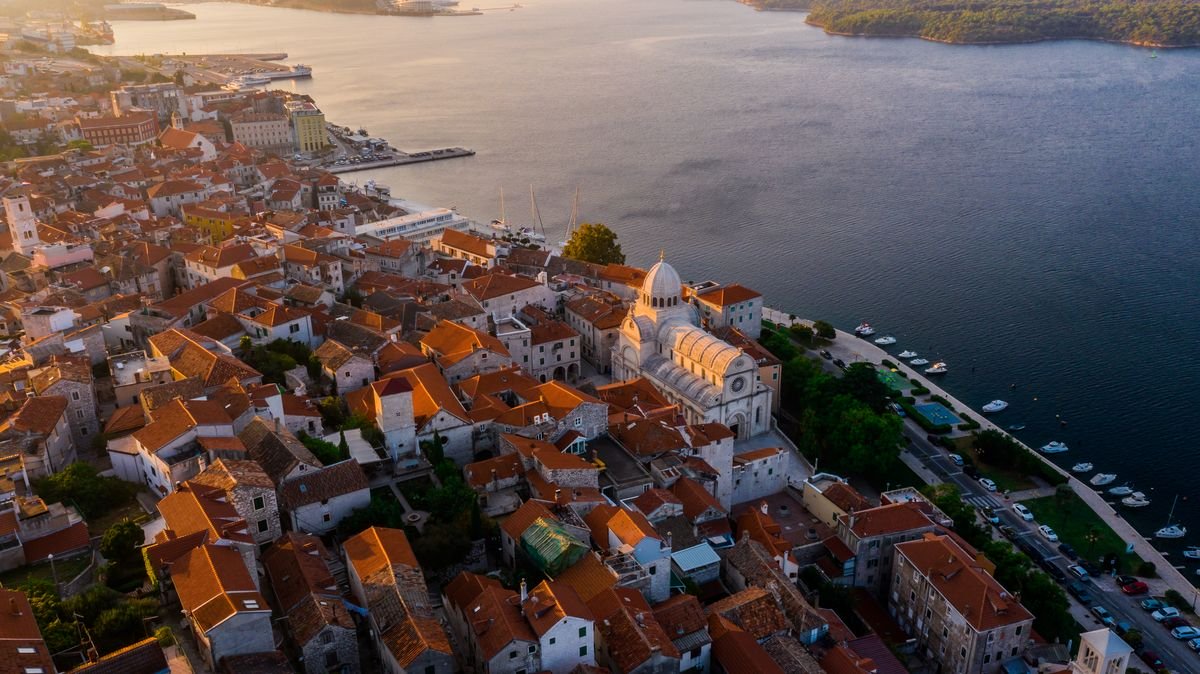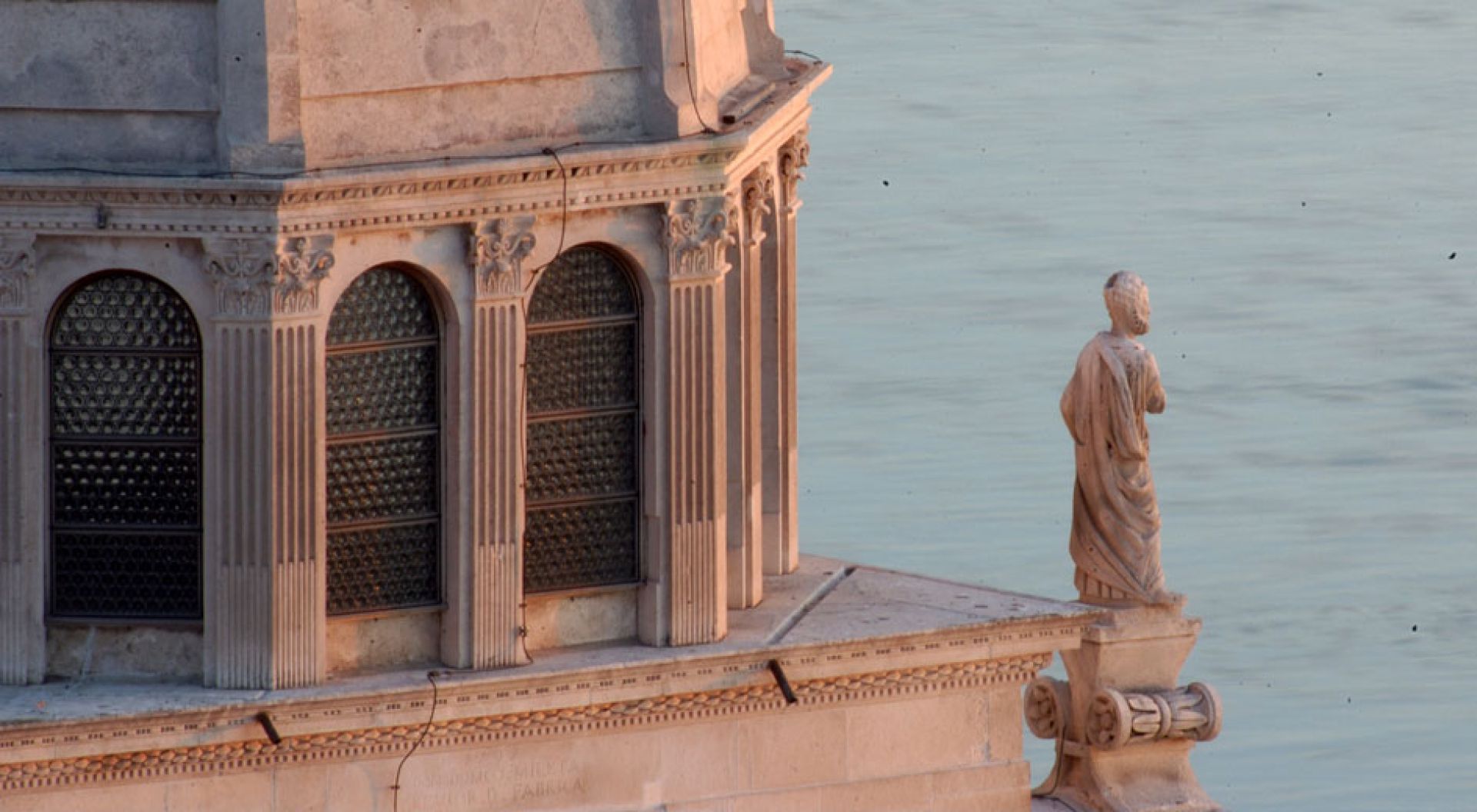
About Šibenik
ŠIBENIK
Šibenik is situated in the central part of the Croatian Adriatic Coast, in the picturesque and indented bay where the Krka River, one of the most beautiful karst rivers in Croatia enters the sea. Today Šibenik, with 46,332 inhabitants, is the administrative, political, economic and socio-cultural center of the Šibenik-Knin County.
Šibenik and Knin County has 242 islands, islets and above-sea reefs. The most numerous group of islands are the Kornati, which are distinguished by their remarkable beauty known throughout the world.
The Šibenik region is characterized by a Mediterranean climate with hot summers and dry and mild winters. In most parts of the Šibenik region, the most common winds are the bora-bura and the sirocco-jugo, and along the coastal belt there is even the refreshing onshore mistral-maestral.
Šibenik is famous for its cultural and historical sights and natural beauties, and boasts two monuments under the protection of UNESCO, the Cathedral of St. James and the St. Nicholas’ fortress as well as the two national parks, Krka and Kornati. There are even three fortresses in the city: St. Michael’s, Barone, St. John’s and St. Nicholas’ on the sea side with a beautiful view over the St. Anthony’s Channel and the city of Šibenik.
Šibenik was mentioned for the first time on Christmas in 1066 in a document issued by the King Petar Krešimir IV, therefore also called the Krešimir town. It was founded by Croats over a thousand years ago, making it the oldest native Croatian town on the Adriatic.
TRAVEL
By car
Using the motorway (A1) from Zagreb, you will reach Šibenika in about 3 to 3 and a half hours, or on the Adriatic Highway from Rijeka or Dubrovnik, you will reach Šibenik in about 4 hours.
By bus
The bus station in Šibenik is located in the Draga quarter, 300 meters from the Šibenik waterfront. The bus station building has a waiting area.
By plane
The closest airports are Split (54 km) and Zadar (67 km).
Split Airport
Cesta dr. Franje Tuđmana 1270, 21217 Kaštel Štafilić
+385 (0)21 203 555
informacije@split-airport.hr
www.split-airport.hr
Zadar Airport
Ulica I/2A, 23222 Zemunik Donji
+385 (0)23 205 800
info@zadar-airport.hr
www.zadar-airport.hr
Bus routes between Sibenik and airports in Split and Zadar operate daily. Buses depart from the designated locations at the airports according to the established schedule and ride to the bus station in Šibenik. The ticket may be purchased on the bus or at the bus station counter in Šibenik. The price of one-way passenger ticket with luggage is approx. EUR 8. Expected travel time is 1 hour.
VISA REGULATIONS
Now part of the EU, visa requirements for Croatia have fallen into line with the rest of the union.
Even prior to EU entry, foreign visitors did not normally require visas to enter Croatia. Citizens of the U.K., EU countries, the U.S., Canada, Australia and New Zealand did not (and do not) need visas to visit Croatia. Visitors can visit Croatia for up to 90 days in any 180 day period.
For other countries, please check the Croatian Ministry of Foreign Affairs‘ website for visa requirements for Croatia. If you do need a visa, please contact the Croatian Embassy in your country for more information.
There is a list of Embassies on the Ministry of Foreign Affairs’ website. This list will also tell you which Embassy to contact if there is no Croatian Embassy in your home country.
CUSTOMS
Custom duties are not paid on personal objects. Professional and technical equipment of sustainable value should be reported upon entering Croatia. Foreign currency can be imported and exported freely.
HISTORIC FIGURES
Ante Šupuk
Ante Šupuk was a Croatian inventor who created the first hydroelectric power plant in the world on the Krka River in 1895. Thus, Šibenik became the first city in the world to have public lighting powered by alternating current. He was also known as the first mayor of the town, chosen by the people and it was him who saved the city from hardship; he introduced the Croatian language into schools, he built the railway, aqueduct and sewage system, he built the port, paved the streets, built the most modern hospital and many more.
Faust Vrančić
Faust Vrančić was a humanist, Latin and Croatian writer, polyhistor, scientist, physicist, inventor, philologist and philosopher, one of the greatest Croatian minds of his time. Vrančić compiled the first larger dictionary of the Croatian language as part of a dictionary that contained the five most renowned European languages - Latin, Italian, German, Dalmatian (now called Croatian) and Hungarian. His researches were published in the Machinae novae (New Devices), a work that describes 56 different devices in five languages, constructions, of which the most famous is the suspension bridge and the parachute. Based on Leonardo da Vinci’s sketch, Vrančić created a more detailed drawing of a parachute entitled Homo Volans and also constructed the earliest known version of the parachute.
Juraj Matvejev Dalmatinac
Juraj Matvejev Dalmatinac was born in Zadar but lived in Šibenik from 1441 to 1473 or 1475, Croatian and Italian sculptor and architect. He deserves credit for having established the Šibenik Architectural School. He was one of the greatest Renaissance craftsmen famous for the construction of the imposing Cathedral of St. James.
GAME OF THRONES LOCATIONS
Besides Dubrovnik and Split, the city of Šibenik appears as a film location in three episodes of the fifth season of the serial Game of Thrones.

The Cathedral of St. James in Šibenik served as a backdrop in the ninth episode of the fifth season of the popular Game of Thrones, in which Šibenik portrays Braavos, the city of the Iron Bank.
St. John’s Fortress
The scene of the fighting pit in the town of ‘Meereen’ was filmed on St. John’s Fortress. In that place, Jorah defeats numerous fighters, while Daenerys watches the fight from the grandstand.
City contours of Šibenik
The contours of the old part of Šibenik are shown in the fifth season, when Arya Stark arrives in Braavos.



